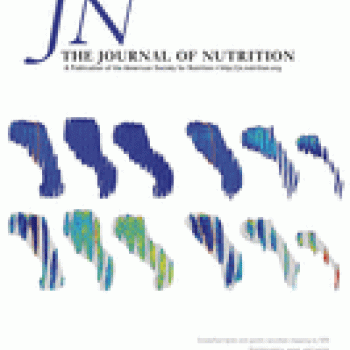Publication Information

Background: Effects of early-life stunting on adiposity development later in childhood are not well understood, specifically with respect to age in the onset of overweight and obesity.
Objectives: We analyzed associations of infant stunting with prevalence of, incidence of, and reversion from high body mass index–for-age z score (BMIZ) later in life. We then estimated whether associations of infant stunting with BMIZ varied by sex, indigenous status, and rural or urban residence.
Methods: Data were collected from 1942 Peruvian children in the Young Lives cohort study at ages 1, 5, 8, and 12 y. Multivariable generalized linear models estimated associations of stunting (height-for-age z score <−2) at age 1 y with risk of BMIZ > 1 and BMIZ > 2 prevalence, incidence (moving above a BMIZ threshold between ages), and reversion (moving below a BMIZ threshold between ages) at later ages.
Results: After adjustment for covariates, stunting at age 1 y was associated with a lower prevalence of BMIZ > 1 at age 8 y (RR: 0.81; 95% CI: 0.66, 1.00; P = 0.049) and 12 y (RR: 0.75; 95% CI: 0.61, 0.91; P = 0.004), as well as a lower prevalence of BMIZ > 2 at age 8 y. Stunting was not associated with incident risk of BMIZ > 1 or BMIZ > 2. Stunting was positively associated at age 5 y with risk of reversion from BMIZ > 1 (RR: 1.22; 95% CI: 1.05, 1.42; P = 0.008) and BMIZ > 2. We found evidence that the association of stunting with prevalent and incident BMIZ > 1 was stronger for urban children at ages 5 and 8 y, and for nonindigenous children at age 8 y.
Conclusions: Stunting predicted a lower risk of prevalent BMIZ > 1 and BMIZ > 2, even after controlling for potential confounders. This finding may be driven in part by a higher risk of reversion from BMIZ > 1 by age 5 y. Our results contribute to an understanding of how nutritional stunting in infancy is associated with BMIZ later in life.
Keywords: body mass index, stunting, children, cohort study, Peru.
Download the journal article Stunting in Infancy Is Associated with Decreased Risk of High Body Mass Index for Age at 8 and 12 Years of Age.

Background: Effects of early-life stunting on adiposity development later in childhood are not well understood, specifically with respect to age in the onset of overweight and obesity.
Objectives: We analyzed associations of infant stunting with prevalence of, incidence of, and reversion from high body mass index–for-age z score (BMIZ) later in life. We then estimated whether associations of infant stunting with BMIZ varied by sex, indigenous status, and rural or urban residence.
Methods: Data were collected from 1942 Peruvian children in the Young Lives cohort study at ages 1, 5, 8, and 12 y. Multivariable generalized linear models estimated associations of stunting (height-for-age z score <−2) at age 1 y with risk of BMIZ > 1 and BMIZ > 2 prevalence, incidence (moving above a BMIZ threshold between ages), and reversion (moving below a BMIZ threshold between ages) at later ages.
Results: After adjustment for covariates, stunting at age 1 y was associated with a lower prevalence of BMIZ > 1 at age 8 y (RR: 0.81; 95% CI: 0.66, 1.00; P = 0.049) and 12 y (RR: 0.75; 95% CI: 0.61, 0.91; P = 0.004), as well as a lower prevalence of BMIZ > 2 at age 8 y. Stunting was not associated with incident risk of BMIZ > 1 or BMIZ > 2. Stunting was positively associated at age 5 y with risk of reversion from BMIZ > 1 (RR: 1.22; 95% CI: 1.05, 1.42; P = 0.008) and BMIZ > 2. We found evidence that the association of stunting with prevalent and incident BMIZ > 1 was stronger for urban children at ages 5 and 8 y, and for nonindigenous children at age 8 y.
Conclusions: Stunting predicted a lower risk of prevalent BMIZ > 1 and BMIZ > 2, even after controlling for potential confounders. This finding may be driven in part by a higher risk of reversion from BMIZ > 1 by age 5 y. Our results contribute to an understanding of how nutritional stunting in infancy is associated with BMIZ later in life.
Keywords: body mass index, stunting, children, cohort study, Peru.
Download the journal article Stunting in Infancy Is Associated with Decreased Risk of High Body Mass Index for Age at 8 and 12 Years of Age.

